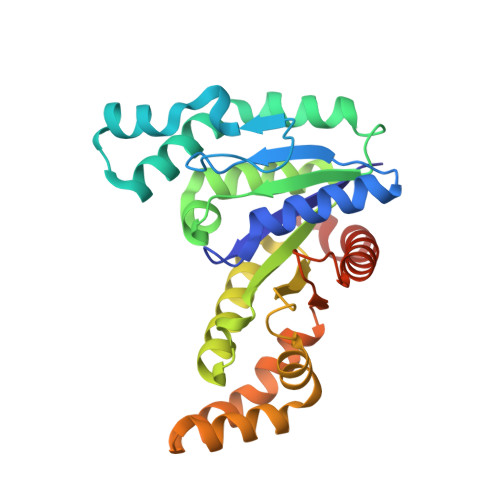Structure of GPN-Loop GTPase Npa3 and Implications for RNA Polymerase II Assembly.
Niesser, J., Wagner, F.R., Kostrewa, D., Muhlbacher, W., Cramer, P.(2015) Mol Cell Biol 36: 820-831
- PubMed: 26711263
- DOI: https://doi.org/10.1128/MCB.01009-15
- Primary Citation of Related Structures:
5HCI, 5HCN - PubMed Abstract:
Biogenesis of the 12-subunit RNA polymerase II (Pol II) transcription complex requires so-called GPN-loop GTPases, but the function of these enzymes is unknown. Here we report the first crystal structure of a eukaryotic GPN-loop GTPase, the Saccharomyces cerevisiae enzyme Npa3 (a homolog of human GPN1, also called RPAP4, XAB1, and MBDin), and analyze its catalytic mechanism. The enzyme was trapped in a GDP-bound closed conformation and in a novel GTP analog-bound open conformation displaying a conserved hydrophobic pocket distant from the active site. We show that Npa3 has chaperone activity and interacts with hydrophobic peptide regions of Pol II subunits that form interfaces in the assembled Pol II complex. Biochemical results are consistent with a model that the hydrophobic pocket binds peptides and that this can allosterically stimulate GTPase activity and subsequent peptide release. These results suggest that GPN-loop GTPases are assembly chaperones for Pol II and other protein complexes.
- Max Planck Institute for Biophysical Chemistry, Department of Molecular Biology, Göttingen, Germany Gene Center and Department of Biochemistry, Ludwig-Maximilians-Universität München, Munich, Germany.
Organizational Affiliation:



















